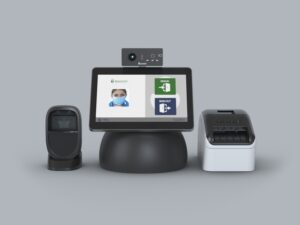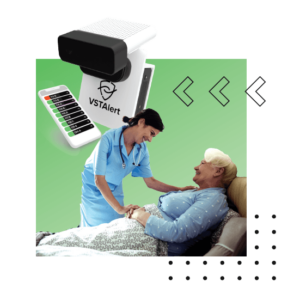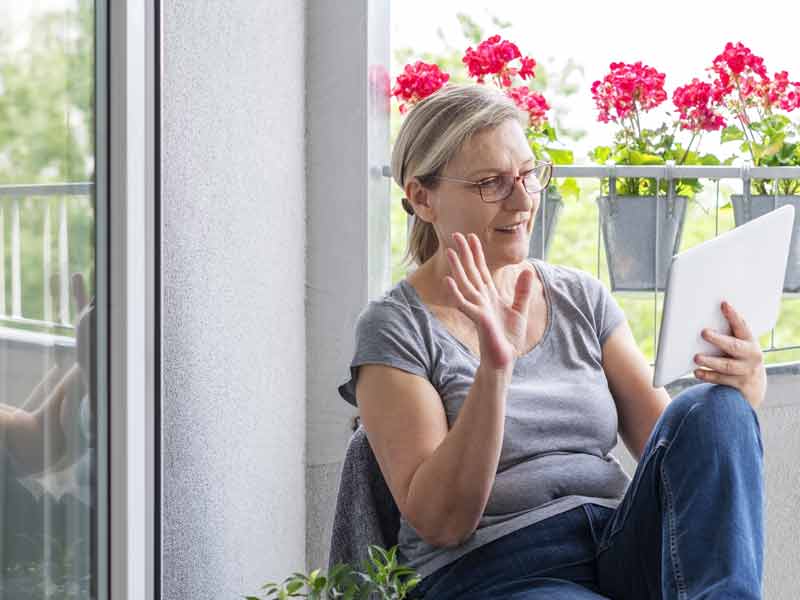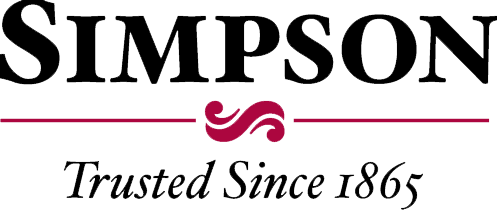By Carol McKinley, CEO
One year ago, our lives changed. A novel coronavirus forced us to lock down and rethink the way we did almost everything in order to try to minimize the spread of COVID-19. If there has been a silver lining to the pandemic, it is that we DID have to rethink so many things and, in doing so, found solutions that could enhance our ability to serve our residents and their families well into the future.
Making Connections Compliantly
In March 2020 I was brand new to Simpson from a leadership role at another senior services organization. One of my first tasks was to close the corporate offices; the following week, we had to close all of our communities. How was I to get to know my staff and the people we serve if we couldn’t meet in person?
Offering a Daughter’s Perspective
When the pandemic began, my own parents were in personal care at another community, so I had direct experience with the issues that family members of our residents faced. I, too, struggled because I could not see my parents. We communicated via Echo Show. It helped me appreciate the need for our staff to enable families to “see” their loved one as much as possible, to make sure that sound quality is good and to make sure that communication appointments happened on time.
Good communication is always important, but especially during the pandemic. In addition to serving residents, we serve their families who rely on us to help them communicate with them about their loved ones. They may feel guilty about not being able to visit or care for their loved ones themselves. They have to trust us—often without having met us—to take care of their loved ones.
Coming onboard right before the lockdown, I was one of those unknowns. Where available, I used Zoom and in-house closed-circuit television to introduce myself to residents and staff. It would be months before I met many of them in person. For all residents, I wrote letters and posted them to the website and on social media. In the summer, I learned that some residents at Jenner’s Pond were holding “roving pubs”—distanced outdoor gatherings for drinks, snacks and socialization. I dropped by to introduce myself.
For those who are used to spending holidays together, this year was especially challenging. We knew it was important to family members who couldn’t visit that their loved ones were enjoying a good day. My dad passed in October and it was my mother’s first Thanksgiving alone. When I called her, I was looking for Thanksgiving decorations as a sign that their staff was planning something fun. At Simpson, we tried to let family members know what we were doing to keep residents engaged in the holiday experience. We talked about our plans on the Zoom meetings: Were our communities decorating for Thanksgiving and Christmas? Special meals? Activities? Anything else? How were we letting families know? As Easter approaches, we are going through the same exercises.
Early on, we started regular conference calls because not all team members had access to a computer with a camera. The leadership team eventually transitioned the calls eventually to twice-daily meetings on Zoom. Say what you will about the videoconferencing platform, but these Zoom meetings brought our team together in a way that hadn’t occurred when we were all working in separate buildings. The platform allowed for listening, encouraging everyone to add their voice to the mix, and collaborating on solutions. Although we were physically distant, we were all moving together in one direction.
Empowering the Team to Serve
I believe that our co-workers can serve best when they feel heard and supported. We looked out for each other, keeping an eye out for how people were doing and making sure they were taking care of themselves. We encouraged them to take scheduled vacations without guilt and to take time when they needed it.
We also empowered teams to make decisions that were in the best interests of residents and families. Our policies and procedures meet strict regulatory guidelines, but allow for good judgment as they are carried out. This was especially evident when it came to compassionate care visits. We wanted families to have that engagement with their loved ones, and our co-workers were able to facilitate that proactively while minimizing risk through testing, hand-washing, personal protective equipment and other measures. After all, we safely operated a COVID-recovery center, so our clinical staff clearly had the necessary experience and understood and practiced the protocols.

Accushield® Sign-in and Screening Kiosk
Exploring new tools for ease, efficiency and a better experience
Technology can be empowering as well. One of the first things we did after lockdown was to enable all our campuses with Wi-Fi networks—a necessary first step for taking advantage of other technology tools. We obtained iPads to make Zoom calls easier and, when visitation was allowed, we added ultraviolet sanitizing wands to our arsenal to enhance cleaning between visitors. We introduced Accushield® kiosks to streamline the way we screened employees and visitors coming into our buildings. Users check in by answering screening questions via a touchpad, which automatically takes their temperature when they position themselves in front of its “eye.”
All this got us thinking about other ways that we could use technology to improve our residents’ experience directly or to free up staff from other tasks so they could focus on what they do best. For greater efficiency, we are implementing the MatrixCare system of electronic health records in all of our communities. We are also using a new system to organize and centralize all of our policies more efficiently.

VirtuSense™ Fall-Risk System
Just because we’re dealing with COVID doesn’t mean other issues go away. We are evaluating other technologies that make sense for our communities. Through the generosity of several of our residents, we’ve introduced VirtuSense™, a fall-risk system designed to predict and prevent falls. We’re also looking at a system called Constant Companion — a voice-activated platform similar to Amazon Alexa or Google Home, which could enhance both resident engagement and clinical service, while being HIPAA compliant. It would measure vital signs like breathing and heart rate, sending the information to a clinical dashboard that a nurse can monitor. It would also allow residents to connect with others—whether calling a family member or summoning a nurse for help.
Forward-looking solutions
Through our recent technology journey, we’ve had the help of three Jenner’s Pond residents who previously worked in corporate technology. They worked with our new IT partner to do an assessment of what we had and what we needed, and they continue to act as a “tech think tank” as we move forward.
And are we ever moving forward! We have agreed to pilot an innovative telehealth technology currently under development. It uses special eyeglasses that allow healthcare providers to assess patients virtually and interactively. When clinical staff wear the glasses, the doctor can see the patient through their eyes. For example, if a patient had a skin rash, the doctor could look at it remotely and, using a special screen, could “show” the nurse wearing the eyeglasses exactly where to take a skin sample or apply a topical medication.
The benefits of such a tool under pandemic conditions are immediately apparent—but there are others as well. The virtual exams make it easier for residents who find it too difficult or tiring to get to the doctor in person, and might make it easier on family members, too. Technology like these eyeglasses, which aren’t on the market yet, and Constant Companion could be game-changers for care in the years to come.
The Advantages of Living in a Retirement Community
During the pandemic, the advantages of living in a retirement community like Simpson House, Simpson Meadows or Jenner’s Pond became very clear. First and foremost was the continuum of medical care they offer, and our nurses’ ability to connect to doctors right away if necessary. Retirement community residents also have priority access to COVID testing and vaccinations, without having to sit on the internet at all hours hoping that an appointment might open up so they can schedule online.

More Lessons to Learn
I have worked in senior services long enough to have addressed hurricane emergency management in a coastal retirement community and to have planned for the H1N1 flu, making sure my communities had the necessary personal protective equipment and protocols in place. So, I know that the next step, as we can breathe a little, is to step back and look at what we need going forward, and to talk to families, residents and other stakeholders to understand what we did well and what we might do differently. We will probably include recommendations from the new Leading Age Pandemic Playbook—a compendium of lessons learned and best practices from our peers. Going forward, we will work even harder to communicate. At Simpson, we have come to see the future not as “getting back to normal,” but as embracing the new world we are all going to live in.
Contact us to learn more about Simpson and our amazing communities.
